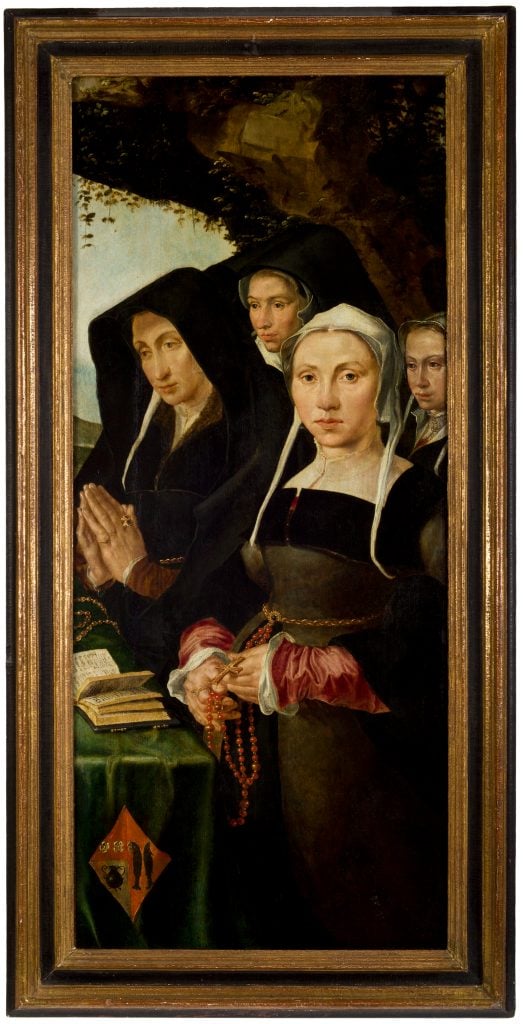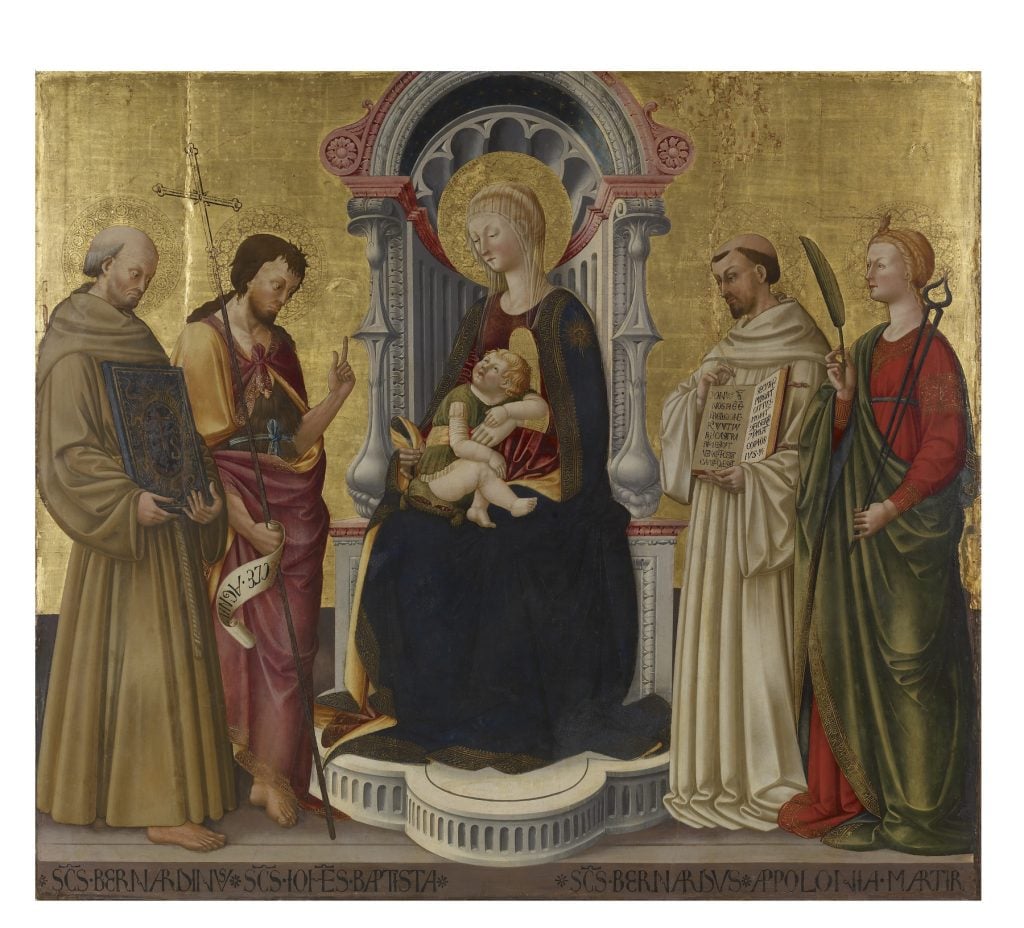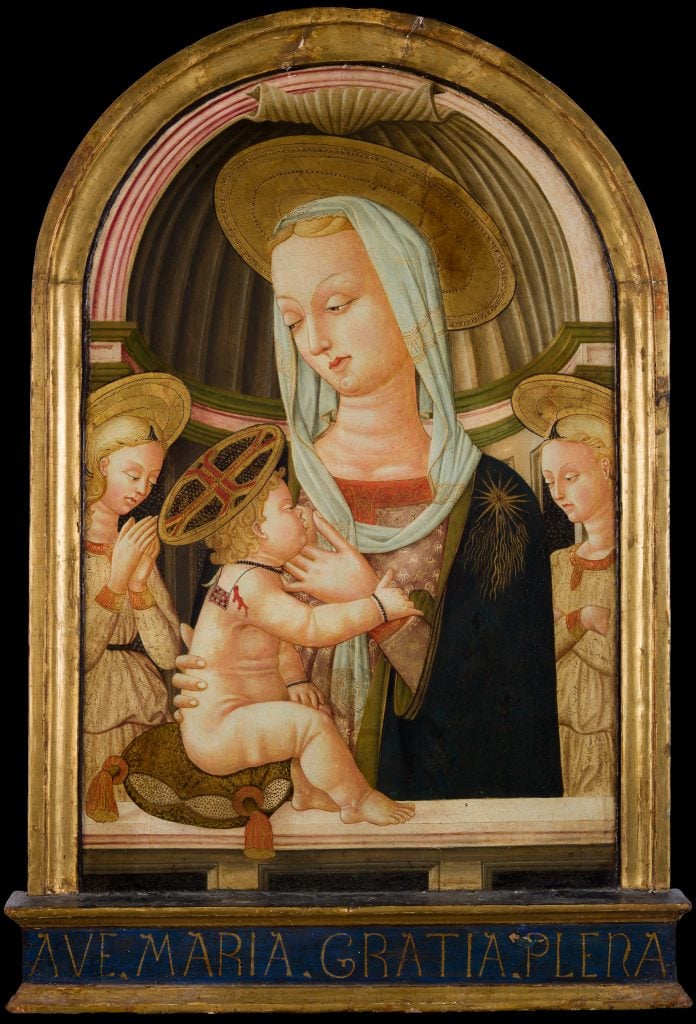The museum giveth, and it taketh away. Decades later, compelled by law, it giveth back.
That’s the best approximate description of the journey taken by Austrian Jewish collector Richard Neumann’s masterpieces.
Neumann (1879–1959) came of connoisseurial age just as Vienna’s royal collections (particularly Habsburg holdings) opened to the public. But the very arts institutions that shaped the young textile manufacturer’s aesthetic taste—to which he lent works, and with whose leaders he had close relationships—subsequently facilitated the Nazi plunder of his art.
He and his heirs sought restitution for decades, with the most recent work being returned to Neumann’s descendants last November.
The Worcester Art Museum’s exhibition, “What the Nazis Stole From Richard Neumann (and the Search to Get It Back)” (through January 16, 2022) tells the story of Neumann and his collection, which Vienna documented in 1921, designating 28 works as “landmarks.” The designation scored Neumann tax breaks and required occasional public access to his pictures.
Less than two decades later, the Albertina curator Otto Benesch, who had advised Neumann on his collection, was appraising the works for the Nazi government—despite Benesch being married to a Jewish woman, said Claire Whitner, the Worcester museum’s director of curatorial affairs.
“It gets very murky in that summer of 1938,” Whitner said, reached via Zoom in Copenhagen.
To Whitner, the exhibition—which includes 14 of the 16 works returned to Neumann’s heirs to date—highlights a collector who sought Old Master works at a time when his Austrian Jewish colleagues gravitated to contemporary art. Whitner calls him a collector’s collector.
“He was a lover of Christian Old Masters, and his house was filled with ‘Madonna and Childs’ and altarpiece wings,” she said. “He was a real art historian.”

Giovanni Battista Pittoni the Younger’s Hannibal Swearing Revenge against the Romans (1720s). Courtesy Worcester Art Museum.
The show also offers a cautionary tale for collectors, as aesthetic fault lines shift. Mirroring the riches-to-rags journey of Neumann—who lost everything fleeing to France and then Cuba, ultimately immigrating to the United States—the works he collected have seen their stars diminish in passing decades. Artists whose works Austria’s top museums sought out 100 years ago may draw blank stares today.
“The way we experience art museums are all constructs of taste and who was buying this art, when they were buying it, when the museum had money to make acquisitions on their own, and who was helping them buy things,” Whitner said.
Neri di Bicci was once one of the best-known 15th-century Florentine painters due to his extensive journals. Yet his name is rarely familiar to non-experts, even though his Madonna and Child (1400s) is a personal favorite of Whitner’s.
Whitner suggested that Neumann was drawn to the work because it reflected the transition from medieval symbolism to Renaissance naturalism. “Jesus is starting to look a little bit more like a baby and less like an old man,” Whitner said, although the nursing Mary is “just so bizarre. Her breast seems to be coming out of her collarbone.”
By serendipity, di Bicci’s family tree—which Giorgio Vasari bungled—twice echoes Neumann’s.
The Italian artist (1419–91) was the third in a grandfather-father-son chain of painters, just as Neumann followed his father and grandfather in the family business after earning a philosophy doctorate at Heidelberg.

Maerten van Heemskerck’s right altar wing with female donor (around 1540). Courtesy Worcester Art Museum.
Meanwhile, Giovanni Battista Pittoni the Younger’s Hannibal Swearing Revenge Against the Romans (1720s) is “so alive,” Whitner said. “The brushwork is so fluid; the color is so vibrant. It’s clearly a connoisseur’s painting.”
A contemporary of Giovanni Battista Tiepolo’s, Pittoni, like di Bicci, is relatively obscure today. That’s despite the Portland Art Museum noting he was among Venice’s greatest painters, with “airy, courtly treatments of Biblical and mythological subjects [that] brought him an international clientele.”
Then we get to Maerten van Heemskerck’s 1540 altar wings depicting male and female donors, which were Neumann’s prized possessions, and were the subject of a lawsuit he filed against Austria in 1950.
We may not all know the artist today, but Whitner notes that the panels “have all the hallmarks of Netherlandish painting, with crisp naturalism, extraordinary attention to detail, and this incredible variety of surfaces.”
Interestingly, the American businessman and collector Henry Walters (1848–1931) collected many of the same artists at the same time as Neumann.
In 1902, for example, Walters bought two di Biccis (Virgin and Child Enthroned with Four Saints and The Coronation of the Virgin with Angels and Four Saints) and van Heemskerck’s Panorama with the Abduction of Helen Amidst the Wonders of the Ancient World. Perhaps five years later, he bought Pittoni the Younger’s The Sacrifice of Polyxena at the Tomb of Achilles.

Neri di Bicci, Virgin and Child Enthroned With Four Saints (around 1450). Courtesy Walters Art Museum.
What explains his interest?
“Henry Walters ended up with Heemskerck and di Bicci and people like that, all the early Italian panel paintings, because he was too cheap to buy like Frick,” said Gary Vikan, who directed Baltimore’s Walters Art Museum from 1994 until 2013 and is author of the 2020 book The Holy Shroud: A Brilliant Hoax in the Time of the Black Death.
Joseph Duveen, a baron and British art dealer, was instrumental in the deals, Vikan said.
“Walters believed Duveen was acting on his behalf, but in fact Duveen was acting on Frick’s behalf, so all the good stuff went to Frick,” Vikan said. “Duveen’s wife said that Walters was in the business of buying bric-à-brac.”
Vikan suggested that Neumann’s finances may have been similarly constrained: “To play in the big leagues, even at those days, took a lot of money.”
That said, Vikan added that the canon is dysfunctional and predisposes people to think certain artists are better than others.
“If I haven’t heard of the artist, if he’s not in Janson in the class I took as a sophomore in 1965, how could he be any good? Janson was a guy who knew what was going on,” Vikan said, referencing the art historian H. W. Janson, whose art history textbook taught generations of college students.
“God willing, people will form their own judgment, and all of these guys are good,” Vikan added. “But Beethoven is Beethoven after all, isn’t he? Nobody is cheating the system on that one.”
Follow Artnet News on Facebook:
Want to stay ahead of the art world? Subscribe to our newsletter to get the breaking news, eye-opening interviews, and incisive critical takes that drive the conversation forward.








